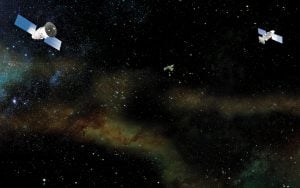
Environment
Five key takeaways from the Arctic Frontiers conference
The uncertainty and change that's currently disrupting the region dominated the annual meeting's agenda
- 2651 words
- 11 minutes
This article is over 5 years old and may contain outdated information.
Science & Tech




Are you passionate about Canadian geography?
You can support Canadian Geographic in 3 ways:

Environment
The uncertainty and change that's currently disrupting the region dominated the annual meeting's agenda

People & Culture
As the climate heats up, so do talks over land ownership in the Arctic. What does Canadian Arctic Sovereignty look like as the ice melts?

Science & Tech
As geotracking technology on our smartphones becomes ever more sophisticated, we’re just beginning to grasps its capabilities (and possible pitfalls)

People & Culture
For generations, hunting, and the deep connection to the land it creates, has been a mainstay of Inuit culture. As the coastline changes rapidly—reshaping the marine landscape and jeopardizing the hunt—Inuit youth are charting ways to preserve the hunt, and their identity.